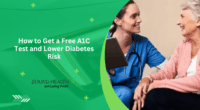Rectal prolapse is a condition that disproportionately affects women over 50, yet remains misunderstood and often overlooked despite its profound impact on quality of life. It occurs when the rectum—the lower end of the large intestine—slips out through the anus, causing discomfort, embarrassment, and potential complications. Recognizing the symptoms early and understanding effective treatment options are crucial for managing this sensitive health issue and improving daily living. This article provides a thorough overview of rectal prolapse tailored specifically for women in this age group, emphasizing symptoms to watch for, causes, diagnosis, home management strategies, and when to seek urgent medical care.

What Is Rectal Prolapse?
Rectal prolapse is a medical condition in which part or all of the rectum falls outside the anus. This can range from a partial prolapse where only the inner lining protrudes, to a complete prolapse where the full thickness of the rectal wall protrudes visibly. “Rectal prolapse is much more common than most people think,” says Alexandra Dubinskaya, MD, a urogynecologist and intimate health expert. It is more common among women over 50, often linked to aging and changes in pelvic muscle strength. The prolapse may occur slowly over time or appear suddenly, and it can vary in severity. Although the condition itself is not life-threatening, it can negatively affect bowel control and quality of life, with symptoms requiring timely attention to prevent worsening.
Rectal Prolapse Symptoms Women Should Never Ignore
Early detection is key to managing rectal prolapse effectively. Women should be alert to the following symptoms:
A visible bulge or protrusion from the anus, especially after bowel movements
Sensation of incomplete bowel emptying or the feeling that something is falling out
Frequent discomfort, pain, or irritation around the anus
Mucus discharge or bleeding from the rectum
Fecal incontinence or difficulty controlling bowel movements
Straining during bowel movements becomes increasingly necessary
A feeling of pressure or fullness in the pelvic area
Ignoring these symptoms often results in worsening prolapse and complications such as chronic inflammation or ulceration of prolapsed tissue. Prompt medical evaluation can provide relief and prevent long-term damage.
What Causes Rectal Prolapse?
Several factors contribute to the development of rectal prolapse, especially in women over 50:
Chronic Constipation: Frequent straining during bowel movements weakens pelvic muscles and increases pressure on the rectum.
Poor Posture: Sitting or straining improperly during toileting can exacerbate prolapse.
Too Many Kegels: While Kegel exercises strengthen pelvic floor muscles, overdoing them without balance can cause muscle imbalance.
Hormone Changes at Midlife: Decreased estrogen levels at menopause contribute to weakening of pelvic tissue and muscles.
Other contributory factors include previous childbirth injuries, genetic predisposition, and increased abdominal pressure from obesity or heavy lifting. Addressing these underlying causes is integral to effective treatment.
How Rectal Prolapse Is Diagnosed
Diagnosis begins with a detailed medical history and physical examination, often including:
Visual inspection of the anus during straining
Digital rectal exam to assess muscle tone and rectal prolapse extent
Occasionally, imaging tests such as defecography or MRI to evaluate pelvic floor structure
Specialists may also test for associated conditions like nerve damage or incontinence. Early diagnosis enables more conservative treatment approaches to be effective and prevents progression.
How to Manage Rectal Prolapse at Home

For mild to moderate cases, certain home management techniques can help control symptoms and slow progression:
Eat a diet that promotes soft bowel movements: High-fiber foods combined with plenty of water reduce straining.
Use a footstool in the bathroom: Elevating feet improves toilet posture making bowel movements easier.
Try pelvic floor physical therapy: Professional guidance helps strengthen muscles correctly.
Practice ‘reverse’ Kegels: Learning to relax pelvic muscles counters excessive tension caused by regular Kegels.
Consider the ‘splinting’ strategy at bathroom time: Using fingers to support prolapsed tissue during bowel movements.
Try the ‘moo to poo’ breathing method: Coordinating abdominal pressure with relaxed breathing eases strain.
These approaches help maintain muscle function and avoid aggravating the prolapse. Physical therapists specializing in pelvic health can tailor exercises and provide valuable education.
What to Do If Your Prolapse Is More Serious
If symptoms worsen—such as increased protrusion, bleeding, severe pain, or incontinence—medical intervention is necessary. Treatment options include:
Manual reduction by a healthcare provider or guided self-reduction at home
Barrier creams to protect irritated skin around the anus
Surgical options like rectopexy or perineal resection, which restore normal anatomy and muscle function with high success rates
Surgery is generally reserved for severe prolapse or when conservative management fails. It is highly effective with techniques improving continence and quality of life in up to 97% of cases. Early surgical consultation prevents complications and recurrent prolapse.
The Bottom Line on Rectal Prolapse
Rectal prolapse is a manageable condition when recognized early and addressed promptly. Women over 50 should never ignore symptoms such as anal bulging, discomfort, or bowel control issues. A combination of lifestyle adjustments, pelvic floor therapy, and medical treatment offers a path to symptom relief and restored confidence. While the condition can be distressing, professional support coupled with informed patient care ensures a positive outcome. Regular check-ups, awareness of bowel habits, and strengthening pelvic health remain essential in maintaining well-being well into midlife and beyond.
Also Read | How to Manage Chronic Pain Naturally Without Medications










